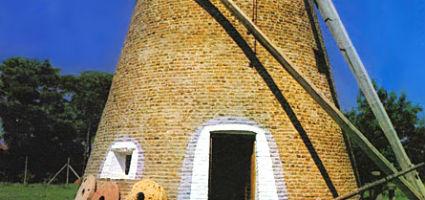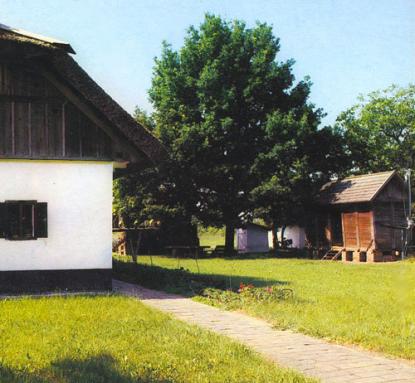2024. April 25. Thursday
The Exhibition Ward of the Csabai Homestead and the History of Grain - Békéscsaba
 |
Address: 5600, Békéscsaba Gyulai út 65.
Phone number: (66) 441-026
E-mail: mmm@bmmi.hu
Opening hours: 01.04-31.10.: Tue-Sat 9-17
|
Museum tickets, service costs:
|
Ticket for adults
|
300 HUF
|
|
|
Ticket for students
(under 26 years of age)
|
150 HUF
|
|
|
Ticket for pensioners
(under 70 years of age)
|
150 HUF
|
The typical peasant homestead divided into three parts was built in 1824. A barn and a shed was added to it after the great flood of Békéscsaba in 1888.

The walls were made of loam. The atrium was divided from the open-chimney kitchen with a 20 cm wide wall. A plastered furnace can be seen in the room. The floor of the room, chamber and kitchen are dirt floor. The roof is covered with thatch.
Besides fixtures used around the turn of the 19-20th century, we also show tools of bread baking. The hand mill was located in the kitchen. Tools of milk, cabbage and hemp procession can be seen in the chamber. Next to them there is a stand to keep bacon on and other necessary tools.
The outbuildings have old type of roof. The garner made of wood built in 1871 was originally located in the yard of the Réti family.
The tools of a family that was involved in crop raising is shown at this exhibition.
Except from Cs. Szabó István: Békéscsaba, Crop Museum - TKM 308.)

The walls were made of loam. The atrium was divided from the open-chimney kitchen with a 20 cm wide wall. A plastered furnace can be seen in the room. The floor of the room, chamber and kitchen are dirt floor. The roof is covered with thatch.
Besides fixtures used around the turn of the 19-20th century, we also show tools of bread baking. The hand mill was located in the kitchen. Tools of milk, cabbage and hemp procession can be seen in the chamber. Next to them there is a stand to keep bacon on and other necessary tools.
The outbuildings have old type of roof. The garner made of wood built in 1871 was originally located in the yard of the Réti family.
The tools of a family that was involved in crop raising is shown at this exhibition.
Except from Cs. Szabó István: Békéscsaba, Crop Museum - TKM 308.)
